Introduction
Mealworms are easy to breed at home. The interest of this breeding is the production of proteins in an efficient way, as well as a reduced impact on the environment. On average, you have to spend 2 kJ of energy to recover 1kJ with a "mealworm" breeding (energy ratio of 2). To eat 1 kJ of "beef", 16 kJ are needed! (energy ratio of 16)
The mealworm is an insect, therefore an animal!
If you want to know more about mealworms:
Youtube
Outils
sieve
tray, fabric
Étape 1 - Establishment of breeding
'Beginning of breeding'
Upon receipt of the mealworms, they can be placed in a plastic container with the flour and carrots.
Food
Insects are used to a dry environment, their food should be checked weekly. If you want to consume the insects, you will have to give them human food (no peeling).
Worms eat flour and vegetables (they are crazy about carrots).
'The Mealworm Cycle'
The worm will mutate into an adult, the adults will lay eggs, and the cycle begins again! Before its transformation, the worm stores as much protein as possible.
'Appearance of adults'
Once the first adults are present, keep in mind that there will be small eggs in the tray with adults. It is necessary to have 3 bins:
- 1 tray containing nymphs, adults, adult eggs and cardboard
- 1 tray containing the larvae, adults can stay a maximum of 1 week in this tray (to avoid having eggs in this tray)
- 1 empty bin for transfers
maintenance
The maintenance of the bins is carried out with each sorting of insects. The flour trays can be changed every month. The flour in the adult container should be stored for 4 weeks, in order to collect the larvae from the eggs.
Étape 2 - Sorting insects
It is advisable to sort the insects every week, or every 2 weeks maximum. Adults should be kept separate from the rest of the group in order to improve productivity and prevent cannibalism! (Indeed, insects eat each other if they do not have enough to eat)
'How to sort?'
- Take the three trays, a sieve and a tray with tissue.
- Gradually pass the contents of the container to be sorted through the sieve, this operation must be carried out above the empty container. The flour will gradually pass through the sieve. The empty bin will therefore receive the flour from the bin. The insects and the remaining elements (food, dead insects ...) will remain in the sieve.
- Disposez progressivement le contenu du tamis sur le tableau avec le tissu. Le tableau facilite le tri à la main. Il est possible de pencher le tableau au dessus d'un autre bac vide. Les éléments morts ou ne pouvant s'attacher au tissu ne pourront s'attacher au tissu, ils vont donc tomber. Les insectes vivants (larve et adulte) vont s'accrocher. On peut les séparer dans deux bacs différents.
Il est impératif d'enlever les éléments humides, pour éviter la moisissure. L'intégralité du bac doit passer au travers du tamis. Il est nécessaire d'avoir une alternance entre les bacs, comme précisé à l'étape 1.
Étape 3 - Manger les vers de farine
Précautions
Si vous souhaitez manger les vers de farine, il faut s'assurer que les vers aient reçu une alimentation humaine (carotte, pain, farine). Le premier cycle de vers ne doit pas être consommé, car l'alimentation des vers de farine en animalerie n'est pas destinée pour les humains.
Préparation des insectes pour l'alimentation humaine
Récupérer uniquement les insectes vivants avec le tri. Les insectes vivants peuvent ensuite être déposés au congélateur pendant 24h. Il faut ensuite laver les insectes avec de l'eau et une passoire. Les insectes peuvent ensuite être grillés à la poêle avec du paprika et de l'ail.
Bon appétit !
Published
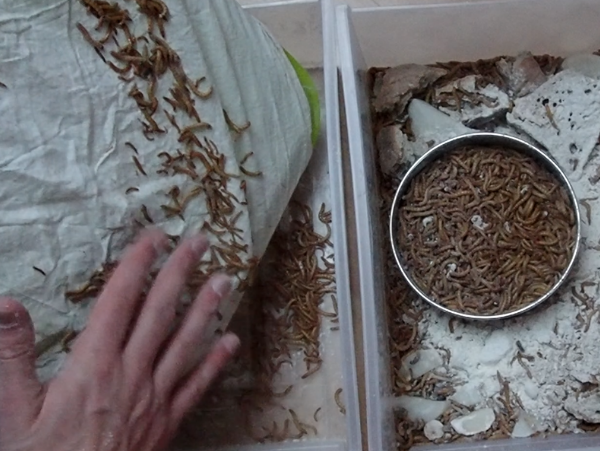
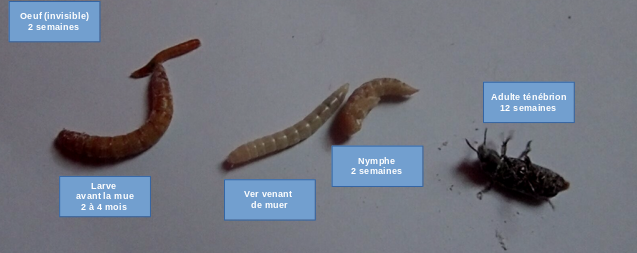
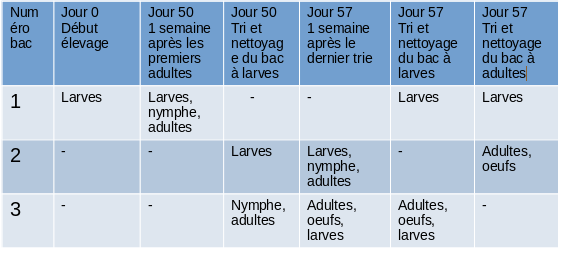
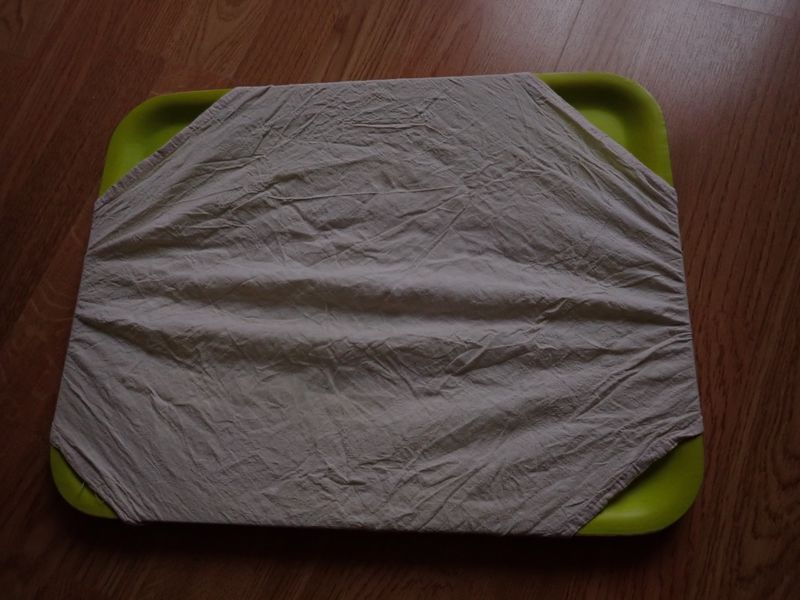
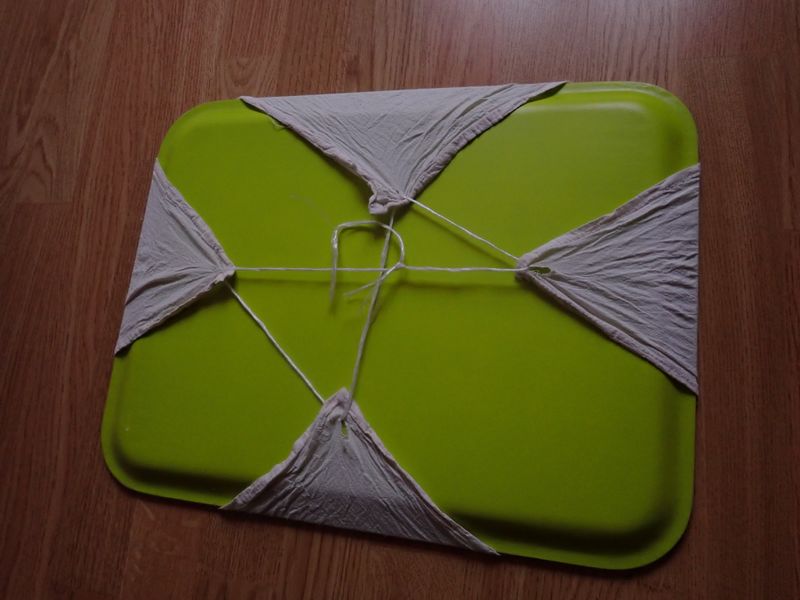
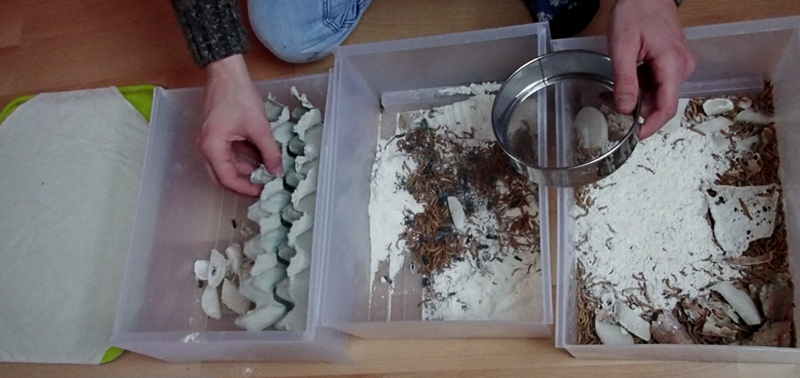
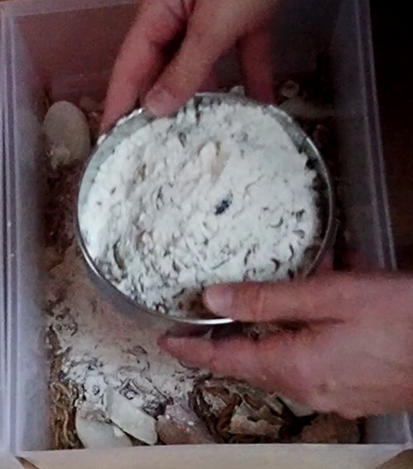
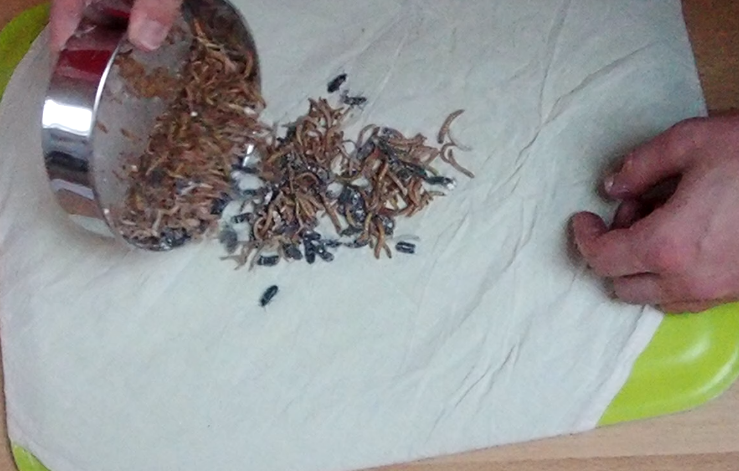
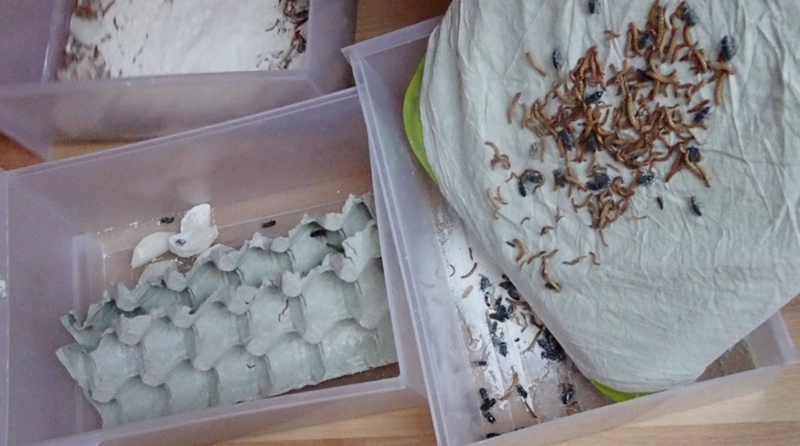
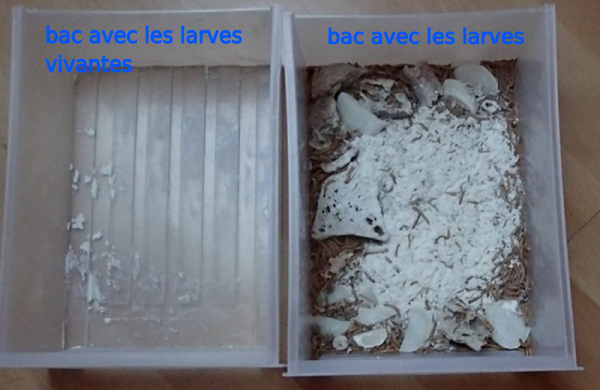
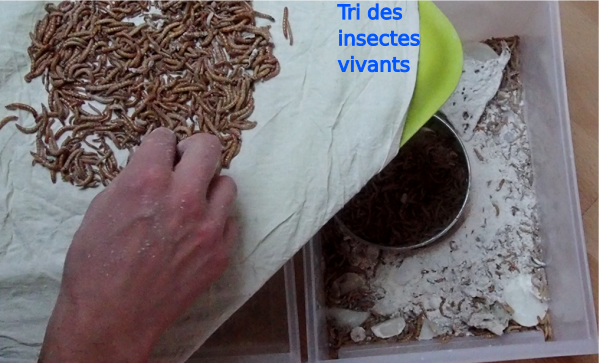
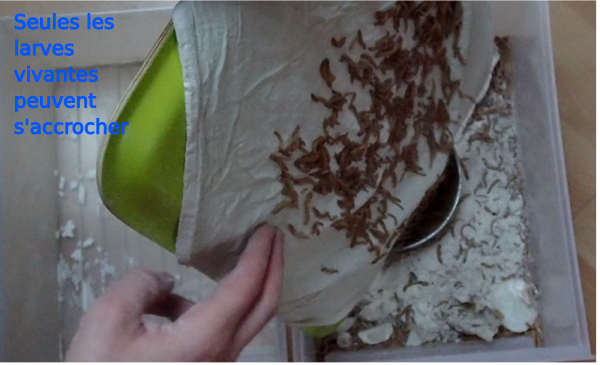
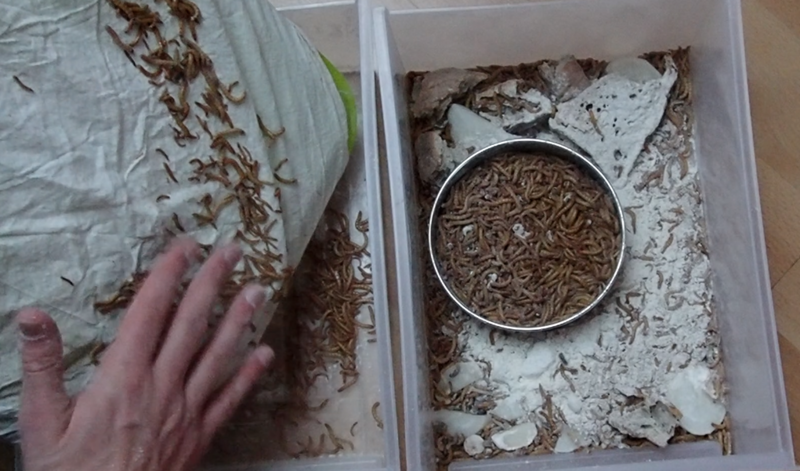
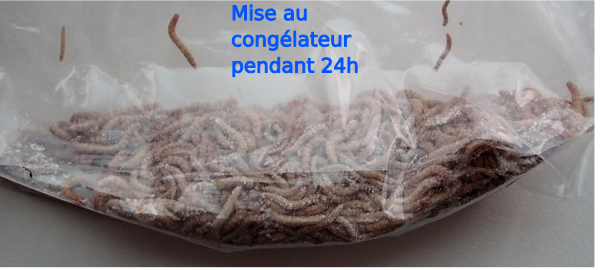
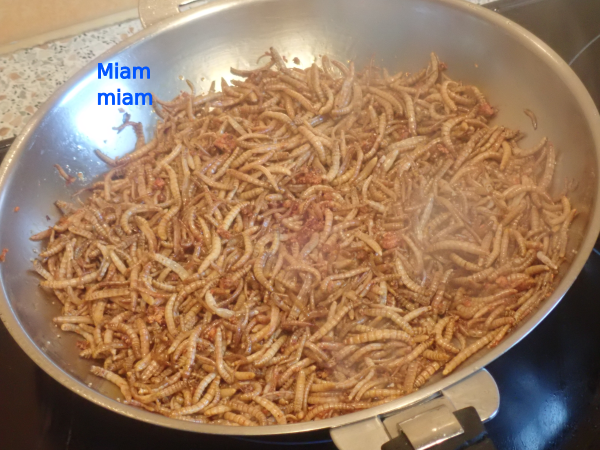
 Français
Français English
English Deutsch
Deutsch Español
Español Italiano
Italiano Português
Português